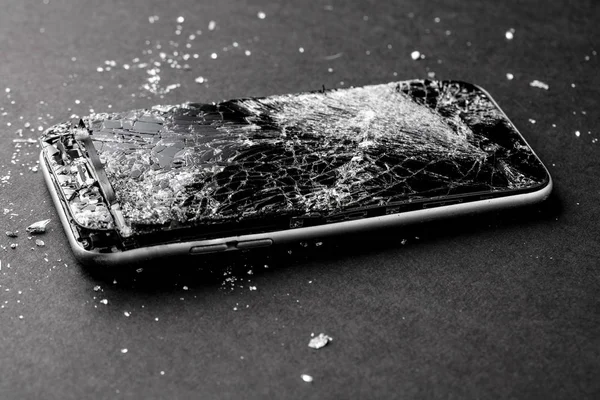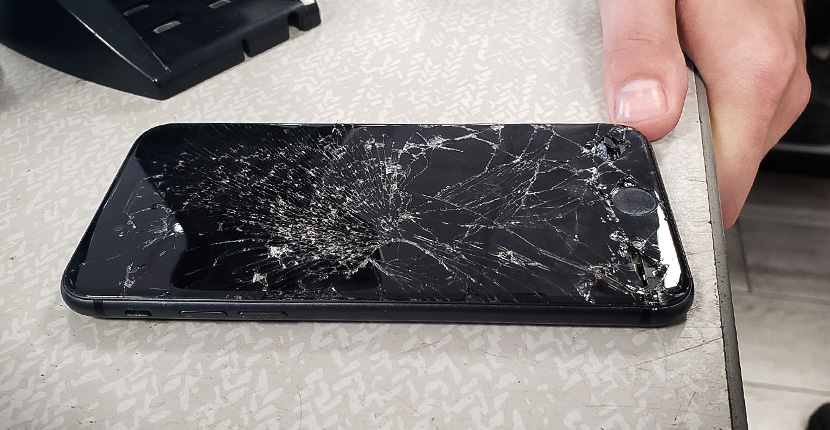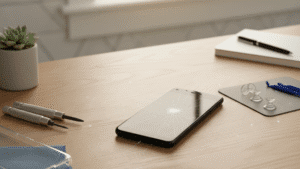Introduction:
When your tablet or phone screen cracks, it’s a moment of frustration and disappointment. But whose fault is it? Blaming someone might be our first instinct, but let’s delve deeper into the factors at play.

Understanding the Causes:
1. Accidental Drops: How often have we clumsily let our devices slip from our hands?
2. Low-Quality Screen Materials: Manufacturers’ choices can affect screen durability.
3. Environmental Factors: Extreme temperatures, humidity, and pressure can weaken screens.
4. Manufacturing Defects: Sometimes, the fault lies in the device’s construction from the start.
The Human Factor:
1. Carelessness: Neglecting to use protective cases or mishandling devices.
2. Distractions: Multitasking while using gadgets increases the chances of accidents.
3. Children and Pets: Innocent, but sometimes destructive, forces around our gadgets.
4. Sharing Devices: Borrowing or lending increases the risk of accidents.
Manufacturer Responsibility:
1. Design Flaws: Thin and sleek designs might sacrifice durability.
2. Quality Control: Ensuring devices meet standards before reaching consumers.
3. Warranty Policies: How manufacturers handle screen damages under warranty.
4. Customer Support: Providing repair services and replacements efficiently.
User Responsibility:
1. Protective Measures: Using screen protectors, cases, and insurance plans.
2. Handling Guidelines: Following manufacturer recommendations for device care.
3. Awareness: Understanding the vulnerability of screens and handling accordingly.
4. Repair Options: Knowing where to go for affordable and reliable repairs.
The Psychological Impact:
1. Emotional Attachment: Devices often hold sentimental value, magnifying the distress of damages.
2. Financial Burden: Repair costs can strain budgets, especially for unexpected accidents.
3. Disruption of Routine: Dependence on devices for daily tasks amplifies the impact of screen damage.
4. Social Embarrassment: Using a cracked screen in public can evoke feelings of embarrassment or shame
Mitigation Strategies:
1. Investing in Protection: Prioritizing quality cases and screen protectors.
2. Education and Awareness: Spreading knowledge about screen vulnerabilities and preventive measures.
3. Backup Devices: Having backup gadgets for emergencies reduces reliance on a single device.
4. Regular Maintenance: Routine checks and cleaning to prevent minor issues from escalating.
Legal Considerations:
1. Product Liability Laws: Consumer rights regarding faulty products and damages.
2. Warranty Coverage: Understanding what damages are covered under manufacturer warranties.
3. Insurance Policies: Assessing if gadget insurance is worth the investment.
4. Dispute Resolution: How to navigate disputes with manufacturers or repair services.
Whether a cracked tablet or phone screen is your fault depends on the circumstances surrounding the damage. Here are some scenarios to consider:
- Accidental Damage: If the screen cracked due to accidental dropping, bumping, or any other unintentional mishap, then it’s generally not considered your fault. Accidents happen, and screens can crack even with the utmost care.
- Negligence: If the screen cracked because you mishandled or mistreated the device, such as throwing it, stepping on it, or exposing it to extreme conditions intentionally, then it can be considered your fault. Negligence in handling electronic devices can lead to avoidable damage.
- Manufacturing Defect: In some cases, a cracked screen may be the result of a manufacturing defect rather than a user error. If the device’s screen cracks without any apparent external force or impact, there may be an underlying issue with the device’s construction or materials.
- Quality of Protective Measures: If you were using a protective case or screen protector at the time of the incident, the effectiveness and quality of these measures can influence whether the damage is deemed your fault. A well-made case or screen protector can help mitigate damage from accidental drops or impacts, but if the protection is insufficient or improperly installed, responsibility may shift.
- Warranty Coverage: Whether the damage is your fault or not may also depend on the terms of the device’s warranty or insurance coverage. Some warranties or insurance plans may cover accidental damage, while others may only cover defects in materials or workmanship. Reviewing the terms of your warranty or insurance policy can provide clarity on your responsibility for repair or replacement costs.
Conclusion:
In the end, the responsibility for a cracked tablet or phone screen often lies in a combination of factors. While accidents happen, both users and manufacturers play crucial roles in preventing and addressing screen damages. By understanding these factors and taking proactive measures, we can minimize the occurrence of cracked screens and mitigate their impact when they do happen.

Ultimately, determining fault for a cracked tablet or phone screen is subjective and depends on the specific circumstances of the damage. In many cases, it’s a combination of factors, including how the device was used, the presence of protective measures, and whether there were any underlying issues with the device itself.
Tech tantrums? We’ve got the fix! ????️ laptops ????️ to iPhones ????, MacBooks ???? to iPads, Your one-stop solution for all things digital. From laptops to smartphones, we mend them all! ???? Visit digimob.com.au for swift and reliable repairs. ????


